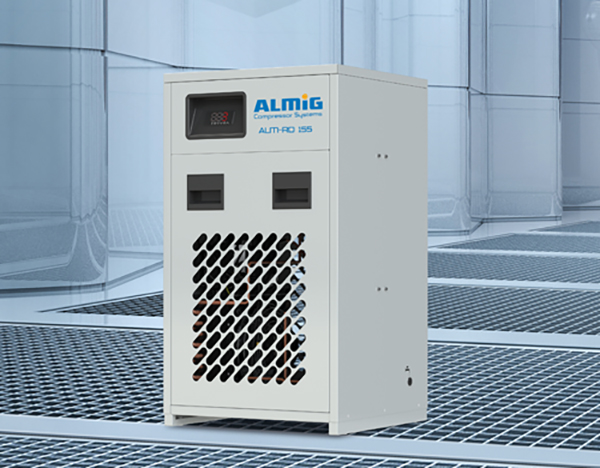Compressed air treatment

Compressed air treatment
ALMiG offers the right type of compressed air treatment for every requirement.
Clean compressed air
No industrial or craft enterprise can do without compressed air. It is used in so many different technical applications that any list of applications would remain incomplete.
To ensure optimum use of compressed air, it should be dry, clean and sometimes oil-free. Compressed air treatment is therefore absolutely essential. However, if it is not provided or is not individually adapted to the requirement profile, this has a negative effect on the entire compressed air system. It can lead to unnecessary production downtimes and shorten the service life of compressed air consumers.
Reason enough to pay attention to the correct individual compressed air quality.
Compressed air treatment:
- prevents corrosion, wear and malfunctions in the supply network
- improves the efficiency of the compressed air system
- extends the service life of compressed air consumers
- measurably reduces production costs
- increases the quality of your products
- increases productivity
Economical and safe treatment of compressed air
To produce one cubic metre of compressed air with an overpressure of 10 bar, a compressor has to suck in eleven cubic metres of ambient air. Together with this air, it also sucks in all the impurities it contains, just like a large vacuum cleaner: dust, fumes, oil vapour, chemicals, etc. Added to this is the natural air humidity.
Despite high-quality intake filters, all these components of the intake air are found in the compressed air. The substances that were distributed over eleven cubic metres of ambient air before compression are now concentrated in a single cubic metre of compressed air. To ensure troublefree operation, dirt, water and oil must therefore be separated from the compressed air.
Humidity
Compressed air contains moisture depending on the ambient conditions. Depending on the application, this moisture must be extracted from the compressed air. There are the following possibilities:
- Cyclone separator: removes free water droplets from the compressed air
- Refrigeration dryer: possible dew point up to max. +3 °C
- Adsorption dryer: possible dew point down to -70 °C.
Which drying is required in individual cases depends on the consumers operated.
Symptoms of incorrectly designed drying are moisture in the compressed air network, icing in winter or increased component wear due to corrosion.
To drain moisture from the compressed air system and dispose of it properly, it is recommended to use:
- Condensate drain
- Oil- Water separators
Solid impurities/oil
In addition to moisture, the compressed air is also contaminated with particles and oil. To remove these components, it is recommended to use filters such as:
- Coarse filter
- Microfilter
- Submicrofilter
- Activated carbon filter
- Activated carbon adsorber
By combining different preparation methods, the purity classes prescribed or recommended for the respective applications can be achieved.
Compressed air storage
Compressed air tanks are used to store the generated compressed air. The required size is determined by calculation.